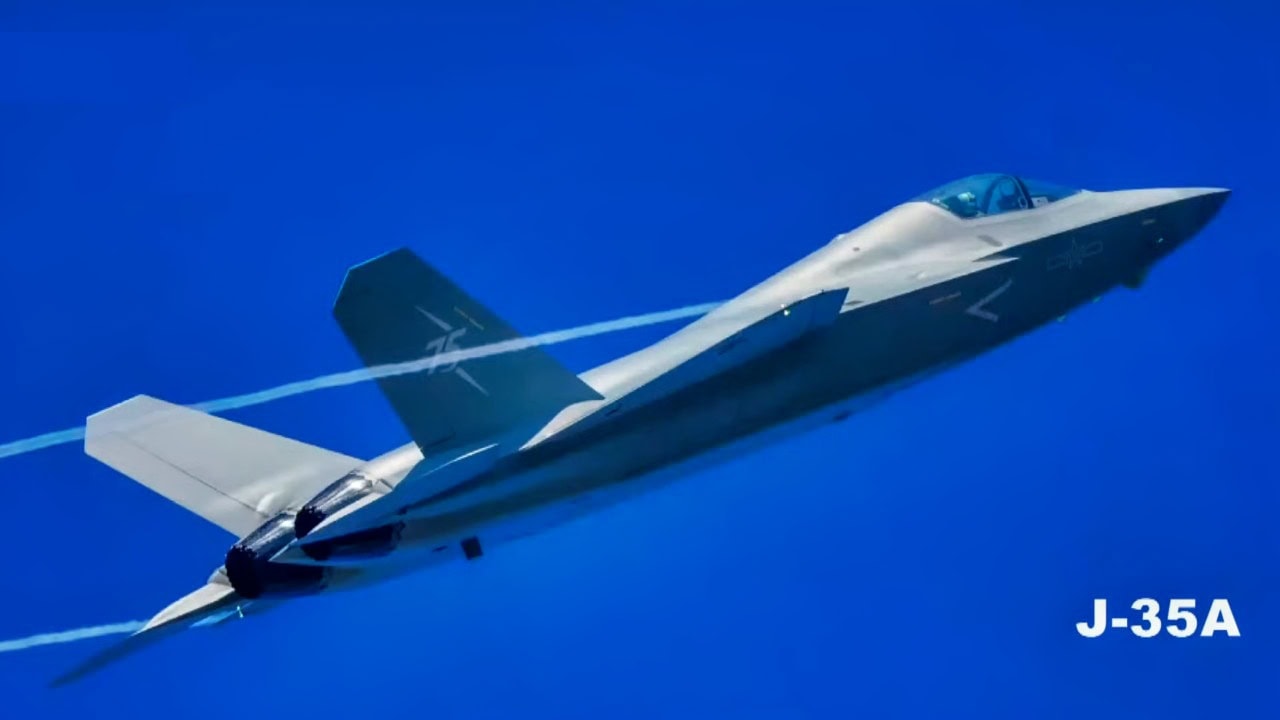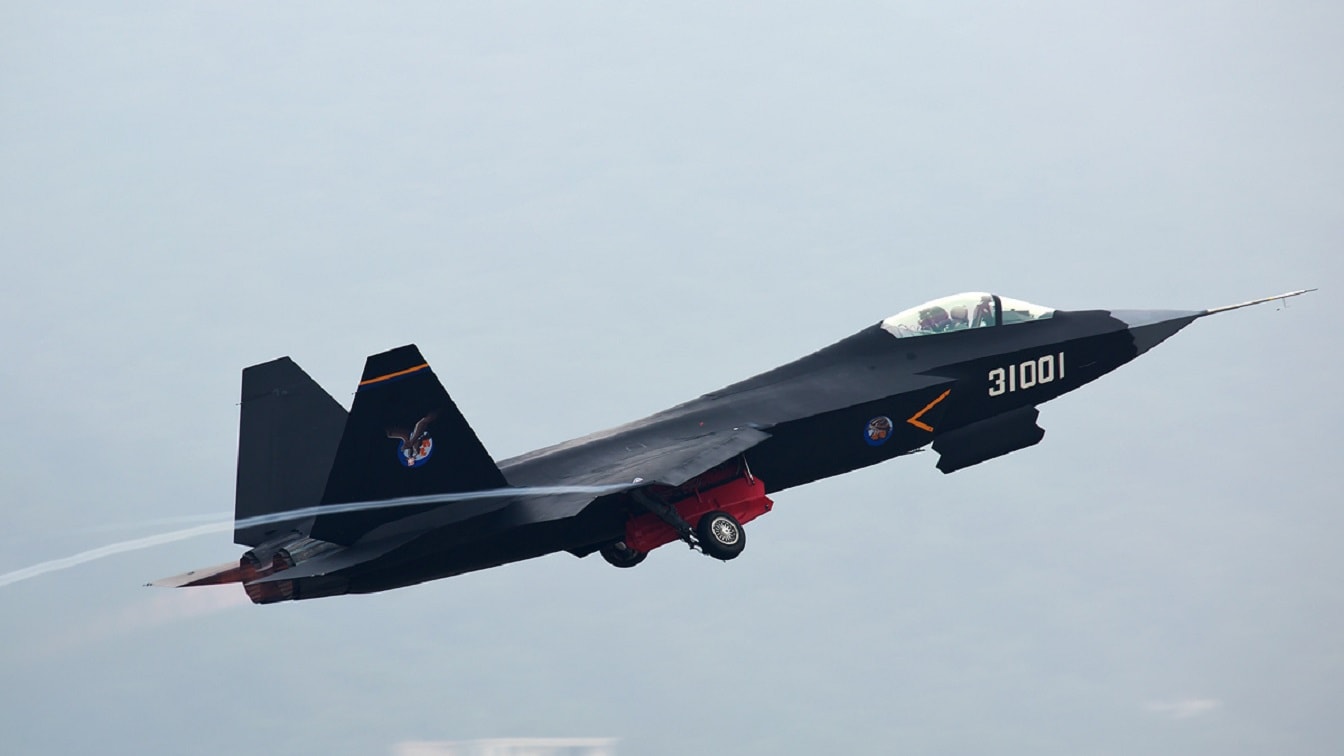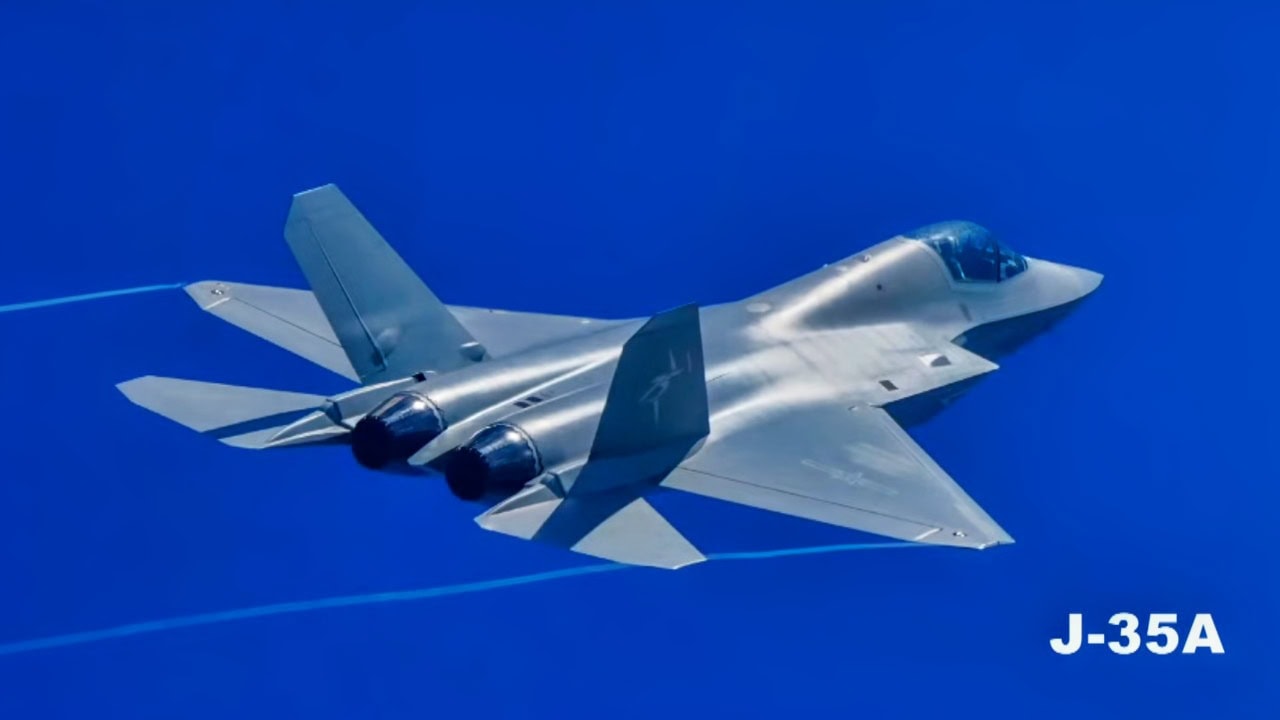Key Points and Summary: China’s J-35 stealth fighter is being positioned as a rival to the U.S. F-35, with plans to deploy it on the PLAN’s newest aircraft carriers, including the CV-18 Fujian.
-While the J-35 features an internal weapons bay and advanced engines, questions remain about its radar-absorbing materials and avionics.
-Reports suggest Chinese cyber-espionage played a role in its design, raising concerns about its effectiveness.
-With China rapidly expanding its navy and air power, experts warn that the J-35 could be part of a broader strategy to challenge U.S. dominance in the Pacific, making it a growing concern for military planners.
J-35 vs. F-35: Is China’s New Stealth Fighter a Real Threat?
Shenyang Aircraft Works (SAC) is one of the two main fighter aircraft design companies in the PRC. For years, it has been primarily responsible for the production of reverse-engineered copies of Russian fighter designs like the Su-27 (J-11), Su-30MK-series (J-16), and carrier-capable Su-33 (J-15).
This changed around 2013-2014 when photos, data sheets, and other materials appeared regarding a program that initially carried the label FC-31. One of the early prototypes flew in 2014 at Air Show China in Zhuhai, Guangdong Province as part of the air show’s flight display.
The performance of the aircraft at this event was less than impressive. It was apparent the aircraft was underpowered, with the pilot constantly fighting to keep the nose up. This was due to the prototype FC-31 being equipped with two RD-93 adaptations of the MiG-29’s Isotov RD-33 jet engine, which was not adequate.
Redesign
The aircraft then went into a period of being redesigned, part of the objective being to make it a carrier-capable platform.Moreover, the latest “ver 2.0” prototype was three tonnes heavier and 20 to 30 inches longer than the original design.
This raised another question mark regarding an adequate thrust engine for the aircraft. If the RD-93 was too underpowered, it would be even more so now with all of these weight-increasing changes. Chinese officials later said that the engines would be replaced with smokeless Chinese-designed engines.
The planform redesign also supposedly reduced the RCS. The FC-31 prototype and the redesigned aircraft that will become the J-35 show that the PRC’s aerospace industry can manufacture aircraft with the stealthy, blended body design of US stealthy fighters.
However, less is known about the aircraft’s materials and whether they are radar-absorbing when they come out of the autoclave. Or do the Chinese follow the Russian practice of using external coatings and appliques to create lower radar returns.
Onboard systems are another question mark with the Chinese. The radar design bureaus have been looking at different designs for an AESA that could be fitted to an aircraft of this size.
But the Russian radar designers who have had the most interaction with Chinese industry tell 19FortyFive that they have had difficulties in the past with the development of algorithms that are adequate for an electronic scanning array radar, as well as the production of transmit/receive (T/R) modules.
“These are the most vital factors in modern fighter design that make all the difference,” said a US defense industry design engineer. “You cannot copy these or make them appear to be ‘the same as’ those of US aircraft. And they will make the difference in how effective these airplanes are.”
The Final J-35
During the COVID crisis, the Shenyang design team went to work around the clock on perfecting the design, which made the aircraft into what the J-35 is today. In the most recent version, Configuring for stealth has the aircraft designed with forward-swept intake ramps, diverterless supersonic inlets and an internal weapons bay to avoid radar detections.
The new engine is supposed to be two Guizhou WS-19 turbofan engines that are supposed to be similar to the J-20’s WS-15 Emei engines. These would have performance well beyond the WS-13 engines originally mentioned as the replacement for the Russian RD-93.
Several US-based Chinese military specialists also credit Chinese hacking efforts for the aircraft’s final design. More than one of them pointed out that the J-35 looks distinctly like a two-engined version of the F-35. The US F-35 jet is being acquired by America’s armed forces and by the People’s Republic of China’s (PRC, Taiwan) neighbors Japan, South Korea, Singapore, and Australia.

China J-35 Fighter. Image Credit: Creative Commons.
In 2014, a Chinese national was arrested in Canada who had been the head of one of the most successful cyber-espionage operations ever targeted against America. He revealed he and his associates had gained access to hundreds of thousands of classified documents, many of which contained details on the F-35 (and F-22) designs. All of the material was translated into Chinese and passed on to Beijing. Some of it appears to have ended up in the J-35’s project office at SAC.
The big concern is that this aircraft is being designed to be placed aboard the newer Chinese aircraft carriers, specifically the CV-18 Fujian flattop carrier equipped with a catapult. The rush by the Chinese to build more carriers and equip them with new aircraft is described by US Navy Captain (ret’d) and former head of Naval Intelligence for Pacific Command James Fanell as a “relentless drive to pass up the United States and become the dominant power in the Pacific,” he says.
“This [J-35] program is just the tip of the iceberg,” he continued. “For almost a decade the PLAN has built and continues to build new warships at a rate of four-to-one compared to the US Navy. This challenge should be the top priority of the Pentagon and the services … China is trying to be push us out of the Pacific. If we do not push back soon it may be too late.”

J-35 Stealth Fighter. Image Credit: Creative Commons.
About the Author: Reuben A. Johnson
Reuben F. Johnson is a survivor of the February 2022 Russian invasion of Ukraine and is now an Expert on Foreign Military Affairs with the Fundacja im. Kazimierza Pułaskiego in Warsaw. He has been a consultant to the Pentagon, several NATO governments and the Australian government in the fields of defense technology and weapon systems design. Over the past 30 years he has resided in and reported from Russia, Ukraine, Poland, Brazil, the People’s Republic of China and Australia.

